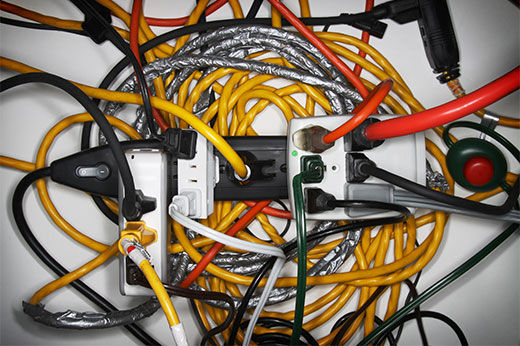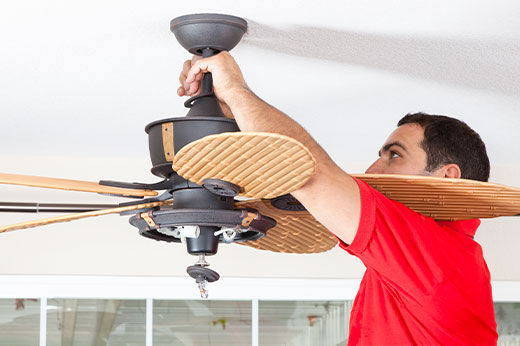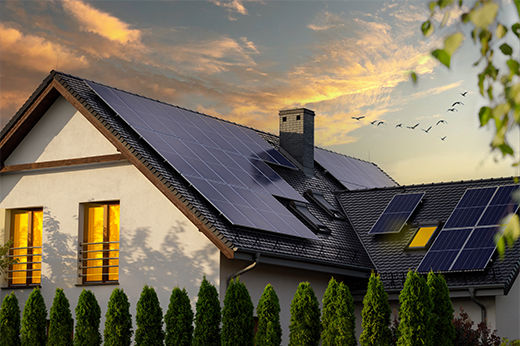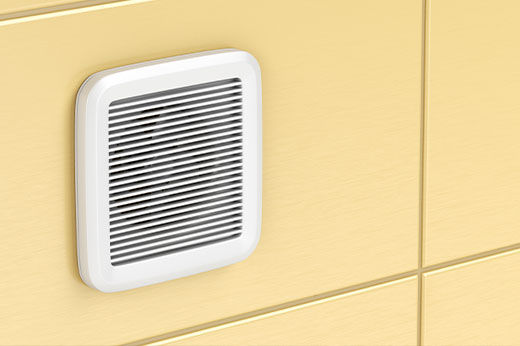How to Prevent House Fires

Did you know that unattended cooking is the leading cause of house fires, followed by smoking and heating equipment? Once a fire starts, it takes only minutes to engulf a house in flames. Although the number of house fires in the United States has declined in recent years, the majority of fire-related deaths occur in a home. Knowing basic fire safety tips will help you prevent a life-threatening tragedy like a house fire.
Test Your Smoke Detector
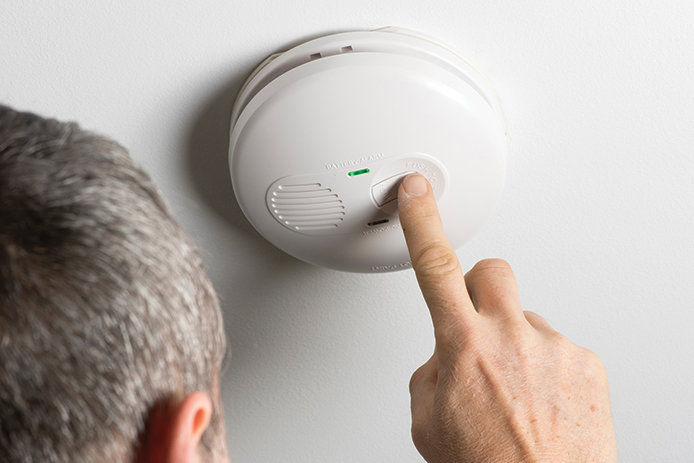
Working smoke alarms give you early warning so you can get outside quickly.
- Test your smoke alarm batteries once a month.
- Replace batteries in battery-powered and hard-wired smoke alarms at least once a year.
- Install smoke alarms in every bedroom and outside of all sleeping areas.
- Smoke alarms should be on the ceiling or high on the wall.
- Smoke alarms should be at least 10 feet from the stove.
- Use interconnected smoke alarms, so that they all sound when one sounds.
- Smoke alarms are available for people who are hearing impaired that use strobe flashing lights to warn of possible fire.
Create & Practice a Fire Escape Plan
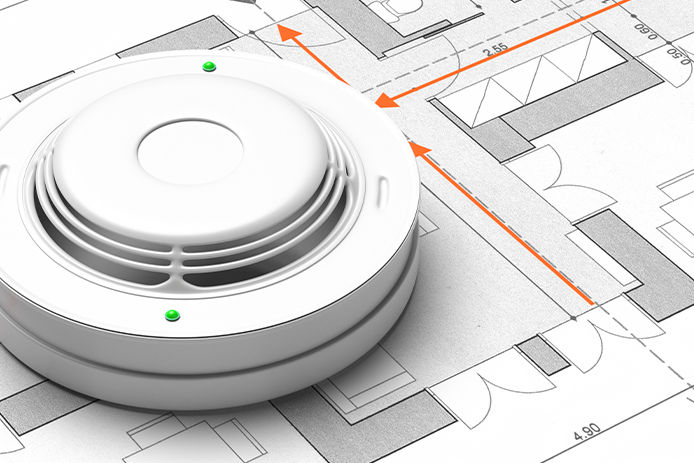
When a fire starts, every second counts. That’s why it’s important to have an escape plan that you can practice to help you get outside as quickly as possible.
- Make sure children know what to do when they hear a smoke alarm.
- Make sure you have a fire extinguisher, and know how to properly use one.
- Find two ways to get out of each room, and know the safe meeting place outside of your house.
- Make sure windows aren't stuck and collapsible ladders are near second story windows.
- Practice Stop, Drop, and Roll if your clothes should catch fire.
- Establish a family emergency plan to determine who will call 9-1-1 and who to contact if you cannot find one another
Form Fire-Safe Habits in the House
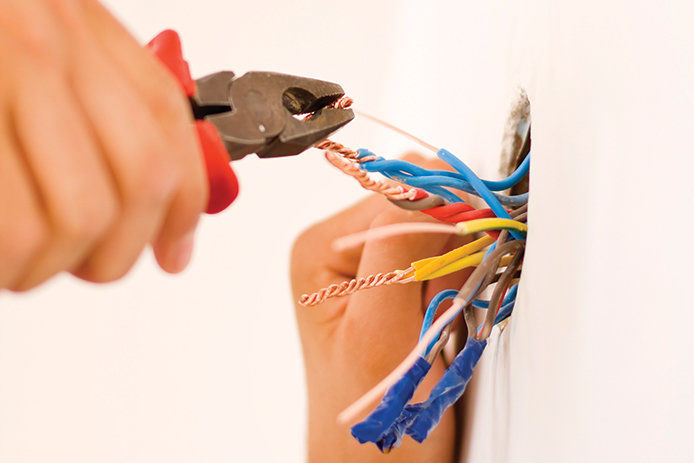
Take these fire safety measures to reduce the risk of a fire in your home.
- Remove lint from your dryer filter. Clogging the vent with lint could force lint on the heating coils causing a fire hazard.
- Sweep your chimney. Cleaning the chimney will prevent creosote buildup and ensure your fireplace or pellet stove runs safely and efficiently.
- Keep matches and lighters in child safe spaces.
- Regularly clean and service your home’s heating source.
- Never leave a burning candle unattended.
- Fix all exposed or frayed wires or plugs, and don't overload electrical power strips.
Avoid Carelessness in the Kitchen
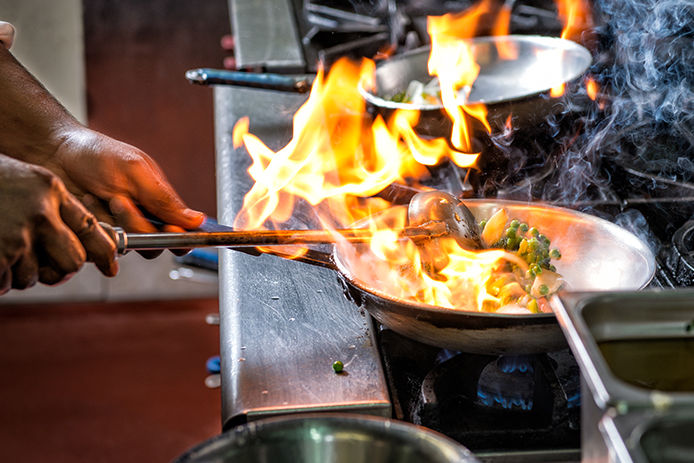
Kitchens are the most likely areas for a fire to start, so it's important to be safe and aware when you're cooking.
- Grills should be 10 feet away from siding and decks.
- If you’re cooking, boiling, or grilling, stay in the kitchen and check it regularly using a timer.
- Wear tight-fitting clothes while cooking.
- Keep kids and pets away from the stove and oven.
- Clear the area around your stove and oven of anything that can catch fire.
- Make sure to turn off all kitchen appliances before you leave your house or go to bed.
- Never pour water on grease fires. Place the lid over the pan and move the pan to a burner that is turned off.
Be Alert When Smoking
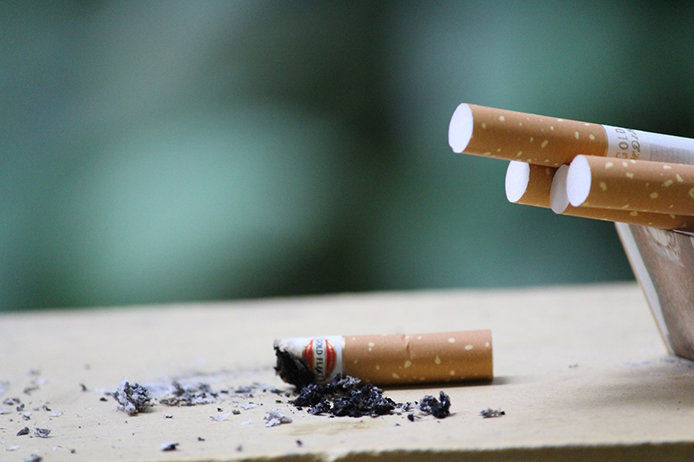
Smokers should know these fire safety tips that will keep their families safe from fire started from unattended or improperly disposed of smoking materials.
- Smoke outside and completely put out butts in water or sand before putting them in an ashtray or trash can.
- Don’t smoke in a home where oxygen is used, as it is highly flammable and makes fire burn faster and hotter.
- Never smoke in bed especially when you’re tired or medicated.
Be Safe with Back-up Heat
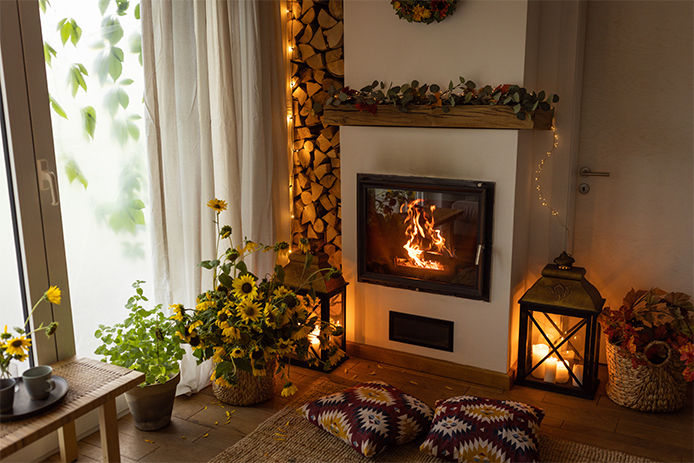
Follow these tips for how to use alternative heating devices safely.
- Never use your oven or range to heat your home.
- Use a protective fire screen in front of your fireplace to catch sparks and keep the fire logs inside the fireplace.
- Keep flammable items like beddings, clothes, and paper at least three feet away from space heaters, stoves, and fireplaces.
- If you’re using a space heater, be sure to set it on a level, hard surface, away from drapes, bedding, and rugs.
- Buy space heaters that have safety measures built in and shut off automatically if the heater falls over.
- Make sure fires are completely out and space heaters are turned off before leaving home.
According to the NFPA (National Fire Protection Association), roughly 3 out of 5 fire deaths happen in residential homes with no smoke alarms or no working smoke alarms. Having working smoke alarms is the first step to keeping you and your family safe from house fires. Following these fire safety guidelines will also help prevent house fires. Ready, set, and get fire-safe!
Stop by your local Do it Best store or shop online at doitbest.com for fire safety essentials!
